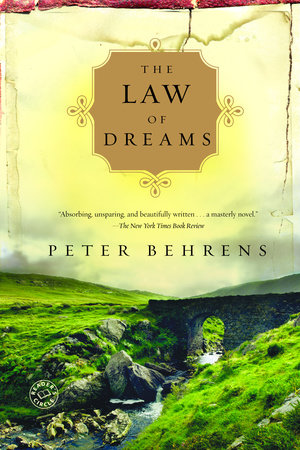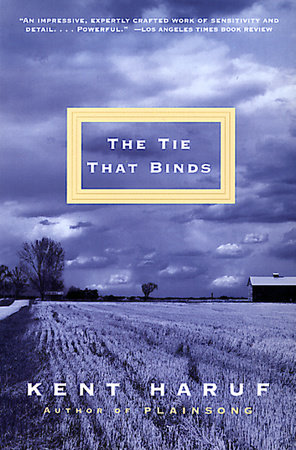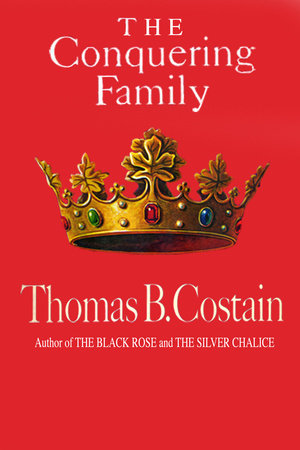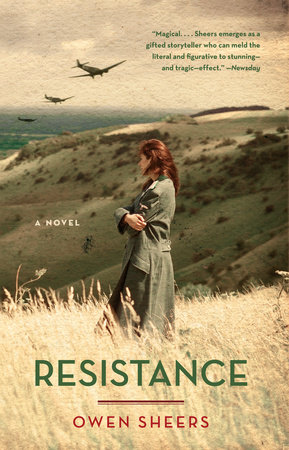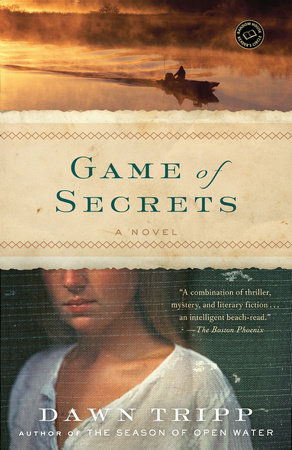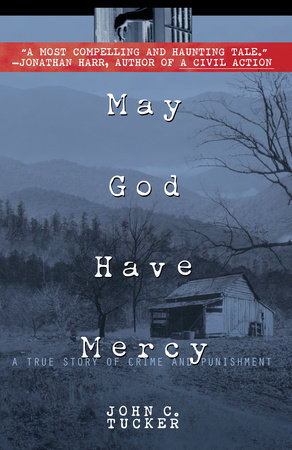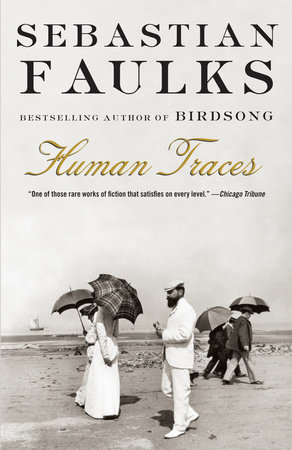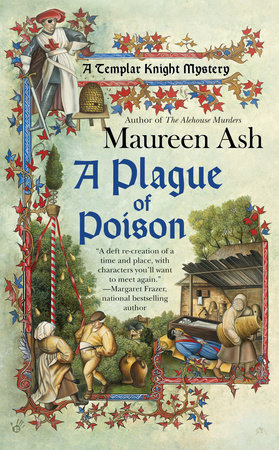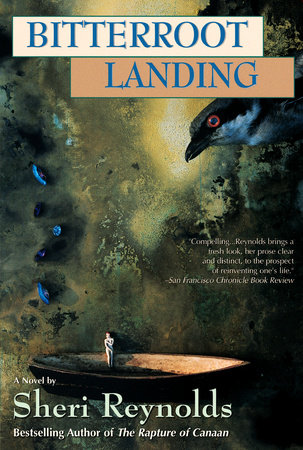Author Q&A
A Conversation with Peter Behrens
Andrew Adam Newman, a frequent contributor to The New York Times and to National Public Radio’s Studio 360 with Kurt Andersen, speaks with Peter Behrens, author of The Law of Dreams.
Andrew Adam Newman: The impetus for The Law of Dreams was somewhat personal, right?
Peter Behrens: Yeah, I grew up in a Montreal family with Irish ancestry and always knew that somewhere lurking in the background was the Famine. I don’t remember anybody telling me about the Famine, but I always knew about it. I don’t remember ever not knowing about it. I imagined Fergus to be my great-great-grandfather of whom I know nothing other than he was an O’Brien–the last name of Fergus–and he came out of County Clare and through Montreal in the 1840s. When I was a kid I would drive around the city with my grandfather, John Joseph O’Brien, and every once in a while we’d pass the Black Rock, which is the memorial of the Famine graves in Montreal. I don’t recall exactly what Granddaddy O’Brien did–he certainly didn’t give me a little canned lecture on the Famine and the sufferings of the Irish people. But I think he may have made a sign of the cross–or maybe he just hissed or spat. Somehow I got the message that this was a dark and almost shameful place. A place of quite terrible resonance, which was still kind of radiating its Irish juju 120 years later.
AAN: Can you talk a little about your research for the book?
PB: There’s a lot of great historiography that began to appear in the 1980s and 1990s, around the 150th anniversary of the Great Hunger, and that was there for me to dive into. And I went all up and down the Saint Lawrence, where the Famine ships came in. I also went to Ireland a number of times– four fairly serious research trips to Ireland. I’d contacted a number of the writers whose works I’d been reading, who were mostly economists, geographers and historians. A number of them were gracious enough to meet with me and I would interview them and get leads. A lot of the small details that you might think are invented come right out of my notes. The thing about the boy’s hair twitching on the ground because there are so many lice in it–that comes from some historical record, from a note I’d made.
AAN: At one point you say someone had “the hunger fur” on his face. I’d never heard of that phenomenon.
PB: Apparently that’s one of the symptoms of starvation. You can lose hair on parts of your body and you can start to sprout it on unlikely places like your forehead and cheeks. When I was in Ireland, I also visited the Famine Museum in Strokestown, County Roscommon, which is remarkable. And I spent a lot of time walking.
AAN: Walking?
PB: A couple of trips I dedicated to roaming East Clare. I spent a lot of time just walking the country that I imagined Fergus walked. I was immersing myself, getting to know the ground quite literally–the smells, the quality of its sunlight. On one trip to East Clare I was traveling alone and I had developed a really dire case of the flu. It was November. I actually was pushing the flu to the point where it was almost pneumonia, and I was hiking around boggy country in East Clare, walking up and down these hills and looking at abandoned cabins from the nineteenth century. I was with a raging fever, probably 102 degrees or something and really feeling out of it. But, I also felt that, in a way, my illness gave me more of a sense of the point of view of someone in dire straits in the 1840s. I’m not comparing flu to typhus, but I remember kind of laughing at myself and thinking, “Well, here I am in the midst of a deathly illness, traipsing over the rain-soaked hills of East Clare. I haven’t come that far from where this all began.”
AAN: When you’re doing research that immersive, was the research fleshing out a plot that you had already pretty much worked out?
PB: No, no, no. I never really had a plan for the plot of this book. What I needed the research for was to ground me firmly in a physical and psychological environment, so I was comfortable exploring it with a character. Then it was just sort of a matter of joining him for a journey, knowing the world in fairly close detail, and being patient enough to wait to see what was going to happen next, what Fergus was going to do next. “Okay Fergus, we’re walking out of this town of Scariff, and it’s cold; where the hell are you going to go now, boy?” And I might be stumped on that for a few weeks or even months. And then suddenly a dray appears and a load of coffins is banging in the back and, okay, let’s hop aboard. I went along with Fergus because I had to find out what happened next. I’m not much of a plotter.
AAN: So the research really drove the plot?
PB: I felt the need when writing to develop a close relationship to a tactile, actual world. And also to get some sense of its sort of psychological reality, you know–how the people really see things. Once I was solidly fixed in that world, the passion to relate it on the page sort of came over me, and that’s kind of what the book is about. I don’t think I’ve written a very intellectual book. Someone said, “You’ve written a book about Ireland’s smells!” And in some ways I have. The book has a fairly simple plot: It’s a journey.
AAN: Does the Famine seem to you like a historical artifact or does it seem like something that’s relevant today?
PB: Oh, completely so. When I was trying to figure out the psychological world, I partly went back to the historical research, but I partly drew on what’s going on today. I had happened to be in Dublin in 1992 working on quite another story having to do with the contemporary Troubles with a capital “T.” I woke up one morning and on the clock radio beside my bed there was a news story that had just broken about this dreadful famine in Ethiopia. Now the story had been happening for a while but you know how these stories break around the world, someone gets a story out with these great pictures and suddenly it’s everywhere. Well, it was everywhere in Ireland. Suddenly that afternoon there were kids in the street rattling cans, collecting money for the famine victims. Within the month, the president of Ireland at the time, Mary Robinson, had flown to New York to address the United Nations on the subject of famine.
AAN: I don’t recall Americans acting with such immediacy.
PB: Well, it was clear that the Famine–the Great Hunger–was still very much a live wire in the Irish consciousness. And when I began to imagine the psychic world of my lawless children I drew that a lot from what we know happens to kids in places like Africa in this millennium when everything breaks down, either through famine or civil war. When there’s no one there to provide any kind of structure or care, lawlessness takes over. The whole notion of the bog boys in the book was inspired by the contemporary accounts I came across. For example, in a monthly police report written by a sergeant in the Royal Irish Constabulatory there was a line, “Lawless children are infesting the highways.” But I also remember seeing a picture–we’ve all seen those pictures out of Africa–of eleven-year-old boys toting AK-47s. And you know, that’s what happens when everything breaks down.
AAN: Right. Not just that sort of vigilantism, but preadolescents growing up really fast.
PB: Yeah, yeah. So if you want to find psychologically the world of famine that I’ve sketched in the book, it ain’t in Ireland anymore. They’ve got the lonely, haunted landscape that these people left, but Ireland’s a prosperous European country now. The Western Ireland of the 1840s that I wrote about resembles much more Somalia and Eritrea now than it does Ireland now.
AAN: Of course there’s a political context for those disasters as there was for Ireland’s.
PB: And you know, it’s stunning because some people say to me kind of na•vely, “How could the British have allowed this to happen so close to the heartland?” But if you think about it, perhaps Somalia is less remote to us now than Western Ireland was from, say, London in the 1840s. People have asked me, “Did the British cause the Famine?” My short answer is yes. Now, blight–specifically, a fungus–caused the potato crop to fail, but policy and lack of policy turned the failure into demographic disaster for Ireland. Were the responses to disaster inadequate, negligent, even criminally negligent? Yes, I think so.
AAN: Why?
PB: I think a large part of the answer lies in the fact that Ireland in the nineteenth century was a captive nation, governed by a class who did not exactly have the interests of the Irish people nearest and dearest to their hearts.
AAN: But your political take on the Famine isn’t really in the book, is it?
PB: I wasn’t interested in writing a book about who was to blame for the Famine. I think everything is political and that’s as it should be, but my concern was really just to deliver the goods. This is viscerally, sensually, psychologically what the Famine was like. This is what it felt like, to be there. It’s not really a book of ideas–the ideas are there, but they’re kind of like bones under the surface, moving.
AAN: Writing of course is as much about the choices you don’t make as the ones that you do. Can you talk a little bit about the book you did not want to write?
PB: The last thing I wanted to do was get all bogus Irishy. For a lot of people who don’t know Ireland all that well, the country is swaddled in a kind of mysticism. It’s just like with a lot of immigrant groups: We tend to throw the “other” onto where they come from, and it’s all the things that we aren’t, and the people there are musical and magical and mystical and all that stuff. And I just didn’t want to go there. That’s not my Ireland. I wanted to be hard and as real as I could and unsentimental.
AAN: Now that you mention it, there’s not a fiddle in this book.
PB: Exactly! There’s not a fiddle. Nobody step dances. Nobody sits back and tells wild Irish yarns, you know? I think the Irish are a misperceived and misunderstood people–at least in America. The Irish are very hardheaded people.
AAN: “Irish” is also often a sort of prefix for “Catholic.” Where’s the Catholicism in the book?
PB: The Catholic Church had been repressed in Ireland for most of the seventeenth and eighteenth century. People in Western Ireland kept the Catholic faith but it was laid over a deep pagan tradition and a native Irish tradition. A lot of the physical and psychological shape of puritanical Irish Catholicism was a mid-Victorian development–the institutions, customs, way of thinking. Many of the people in the hills in Munster and Connaught didn’t see a priest from one feast day to the next. They’d never had a church–maybe a ‘Mass rock’ out in a field, but not a church.
AAN: And it’s interesting that the sex between men that’s happening at Shea’s Dragon is sort of distasteful to Fergus but not freighted with all this judgment about whether it’s immoral.
PB: There’s nothing homophobic about it. He knows the girls are doing what they have to do to survive–he doesn’t judge them, but he can’t just see himself that way. You’d hand over too much of yourself, as a prostitute; you’d be too vulnerable.
AAN: How did horses come to be so central in the book?
PB: I didn’t really realize–until I had some distance from the book and read it through–how equine-obsessed Fergus was. Where did the horses come from? They partly came from some vivid experiences I had observed of horses in Ireland. I know horses pretty well myself because as a young man I worked on cattle ranches. I was a cowboy in an amateurish way and I kind of knew rough horses and rough horsemanship. For Fergus, horses are a way out. Horses are transportation, an escape in some way for him. Also, horses are these independent beings–they don’t give a damn, they don’t know who you are. It may be your horse, but a horse is not like a dog. You can walk into a stable and the horse doesn’t give a damn that you’re the owner or somebody else. And Fergus kind of admires that about them, that they’re within themselves.
AAN: The book is framed more or less by Fergus being helped onto a horse by someone older at the beginning and, at the end, doing the exact same thing for a younger boy. How early in the process did that closing image occur to you?
PB: Actually, it was fairly late. It seems like that it should have been the architecture of the book from the beginning, but you know, you grope your way through to these things and you try to stay open and finally they suggest themselves.
AAN: This is a narrative that you could presumably pick up right from where you left it. Is that a story that you’re interested in?
PB: It seems to be a story that a lot of people are interested in, which I like. It’s not the book I’m working on right now. But America in the middle of the nineteenth century is a fascinating world to me. I’ve had another lifelong historical interest in the Civil War and the western frontier in the Gilded Age. That’s later, in the 1870s. But now I’m jumping a few generations and writing about people I imagine as Fergus’s descendants during World War II. It’s set in northwest Europe and in North America in 1944—45.
AAN: You work a lot as a screenwriter. Is there any interest in a film version of The Law of Dreams?
PB: Yes, there has been some interest.
AAN: While there’s plenty of action in the book, arguably its real strength is Fergus’ private reflection. Could you somehow carry that over to film?
PB: I think I could. I’d like to give it a whirl. Sure, there’s a lot of the interior voice you’re not going to have access to. On the other hand, some of my favorite films, including almost all the works of my favorite director, Terrence Malick–The Thin Red Line, Badlands, Days of Heaven–have these remarkable voiceovers, which are kind of the brain-talk of the characters. And I’m thinking that might be one technique that might be possible. But you also have a camera there to supply all kinds of things that the voice is supplying in the book. I think there’s enough going on in this story that, done properly, everything could come through without using any kind of interior voice.
AAN: There was an almost cinematic quality in the book with a few scenes of oil being plied into something. You know, there’s Fergus sort of getting anointed with oil by Shea in Liverpool, and there’s Molly working oil into the boots in front of the fire, and there’s him working the ointment into the horse. Are those moments connected in some way?
PB: Oh, that’s interesting, yeah. The salve of life. The sort of sweetness and attention that keeps things from breaking apart. Things can be kind of healed with some sort of attention.
AAN: And always getting rubbed into skin of some sort.
PB: Dry, cracked skin, yeah. I have to say, I hadn’t made that connection myself but immediately I see there is a kind of unity of purpose in all that. Some sort of healing is possible if you stop and allow somebody to do it. If it comes from the hand of the other.
AAN: The word “dream” can be used in so many contexts. What’s the word’s significance for Fergus?
PB: After this horrific event that happens to his family, Fergus is never really sure in the first half of the book whether he’s alive or dead. For a long time he’s constantly asking himself, “If you were dead, would you feel this?” His testing of himself–his physical sensuality with Luke, and other things, like the plunging in the cold water–is an effort to reassure himself that he is in fact alive. If this is a dream the thing is to keep moving, keep the dream going. And if you are alive, well, you have a responsibility to stay alive, and see what happens. One thing about Fergus, he pays attention. He doesn’t know a lot but what he does know he knows down to his bones. He doesn’t miss much, that lad.
